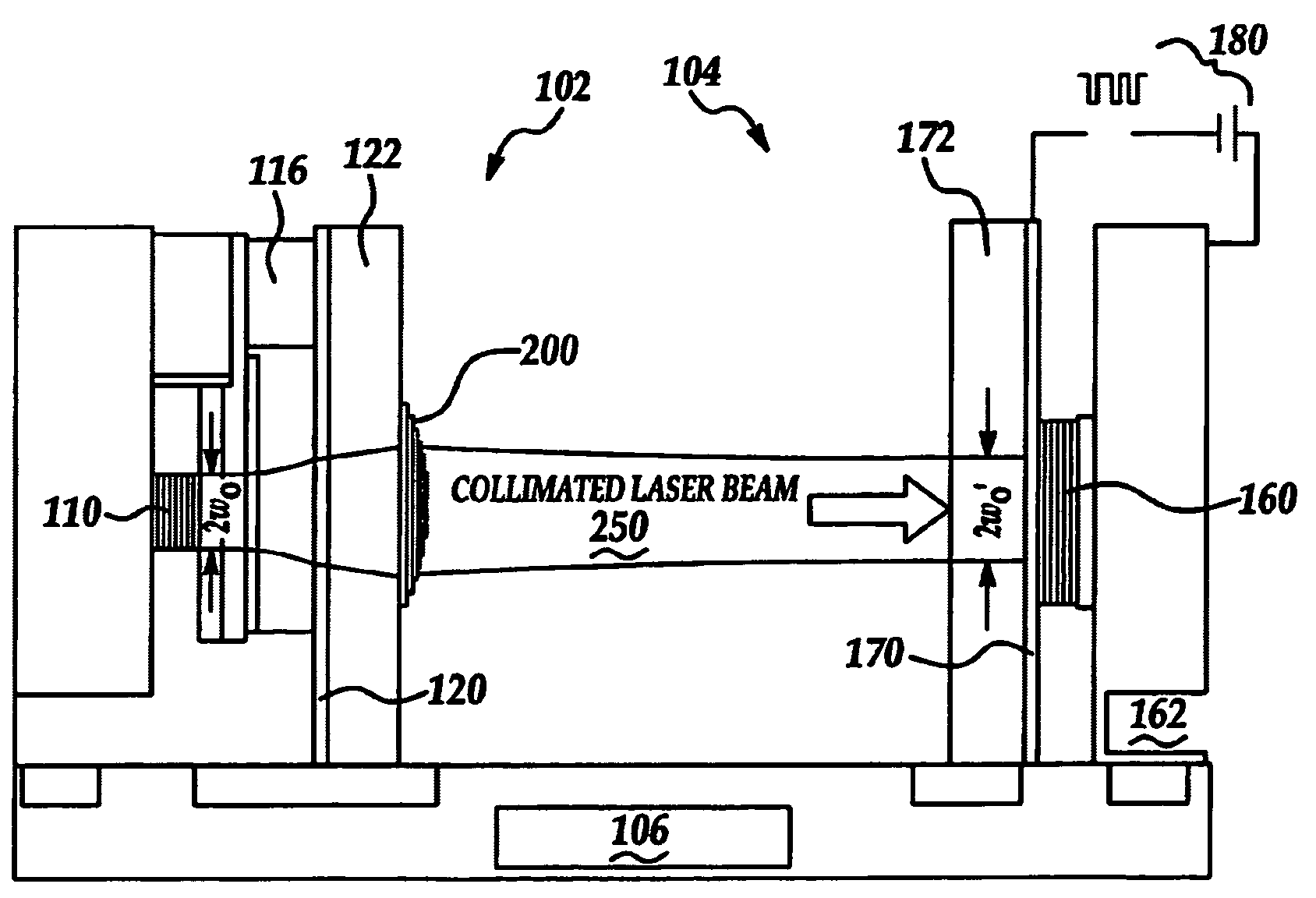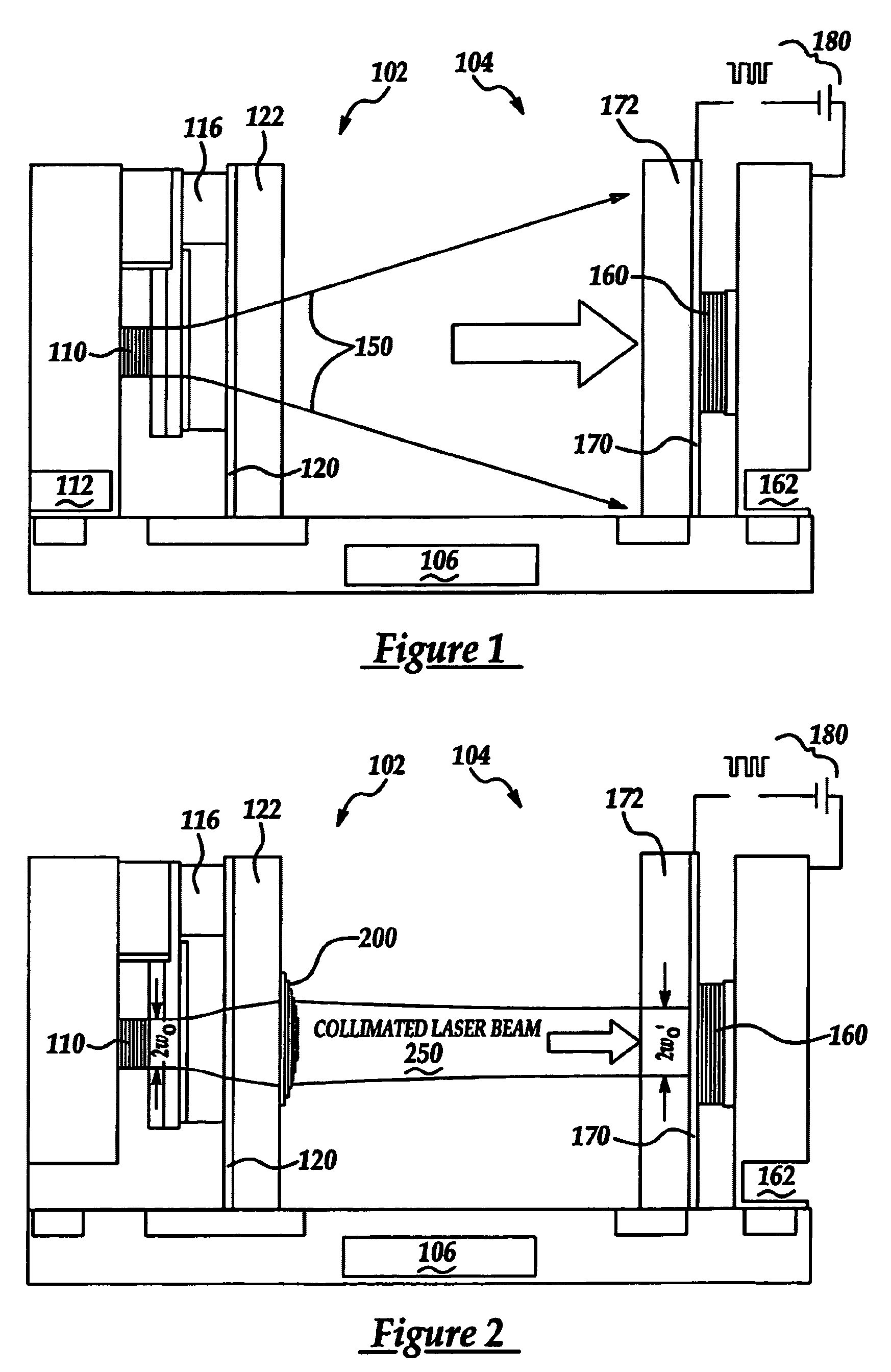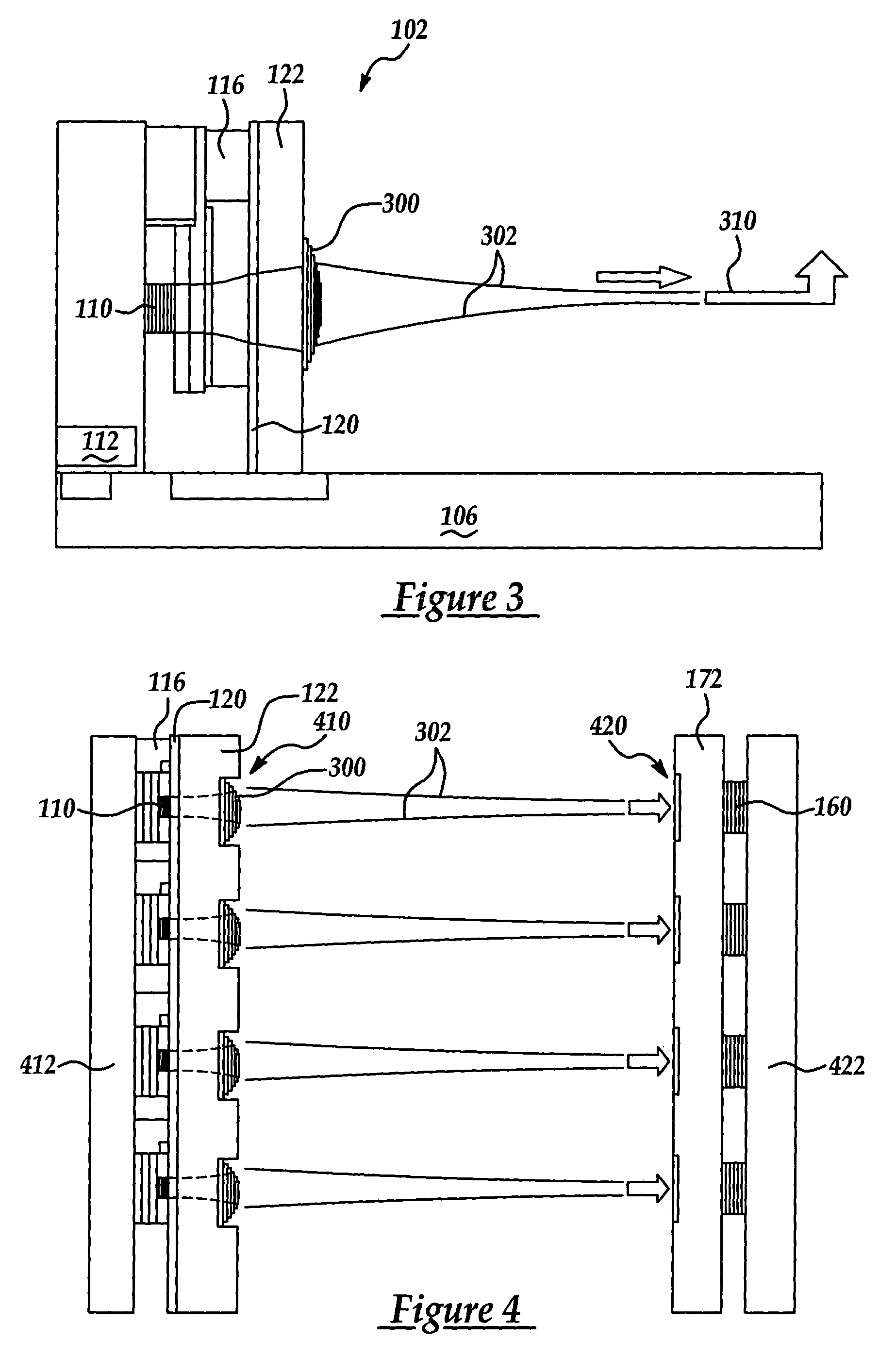Optical transmitters and interconnects using surface-emitting lasers and micro-optical elements
a surface-emitting laser and optical transmitter technology, applied in semiconductor lasers, optical elements, instruments, etc., can solve the problems of difficult direct integration of vcsels to receiving detectors or optical fibers, significant optical aberration and insertion losses, and the difficulty of precise alignment that is necessary for integration to become an even bigger challenge. , to achieve the effect of improving the configuration of optical transmitters and interconnects, improving the flexibility and simplicity of optical design, fabrication and integration
- Summary
- Abstract
- Description
- Claims
- Application Information
AI Technical Summary
Benefits of technology
Problems solved by technology
Method used
Image
Examples
Embodiment Construction
[0020]According to this invention, micro-optical elements (MOEs) are designed and fabricated onto transparent laser driver substrates to collimate or focus the beams from vertical-cavity surface-emitting lasers (VCSELs) in accordance with specific application requirements. According to a method aspect of the invention, the VCSELs are hybridized onto the MOE-bearing substrates using flip-chip bonding technique to form integrated and optically controlled transmitters.
[0021]In the preferred embodiments, silicon-on-sapphire (SOS) substrates are used in conjunction with complimentary metal-oxide-semiconductor (CMOS) VCSEL driver circuits. The driver circuits are fabricated on the sapphire substrates without affecting the optical transmission coefficient. Specifically, the sapphire driver substrates include a layer of index-matching material, and the MOE structures with specific functionality are fabricated on this index matching material using lithography and chemical etching processes. ...
PUM
 Login to View More
Login to View More Abstract
Description
Claims
Application Information
 Login to View More
Login to View More - R&D
- Intellectual Property
- Life Sciences
- Materials
- Tech Scout
- Unparalleled Data Quality
- Higher Quality Content
- 60% Fewer Hallucinations
Browse by: Latest US Patents, China's latest patents, Technical Efficacy Thesaurus, Application Domain, Technology Topic, Popular Technical Reports.
© 2025 PatSnap. All rights reserved.Legal|Privacy policy|Modern Slavery Act Transparency Statement|Sitemap|About US| Contact US: help@patsnap.com



